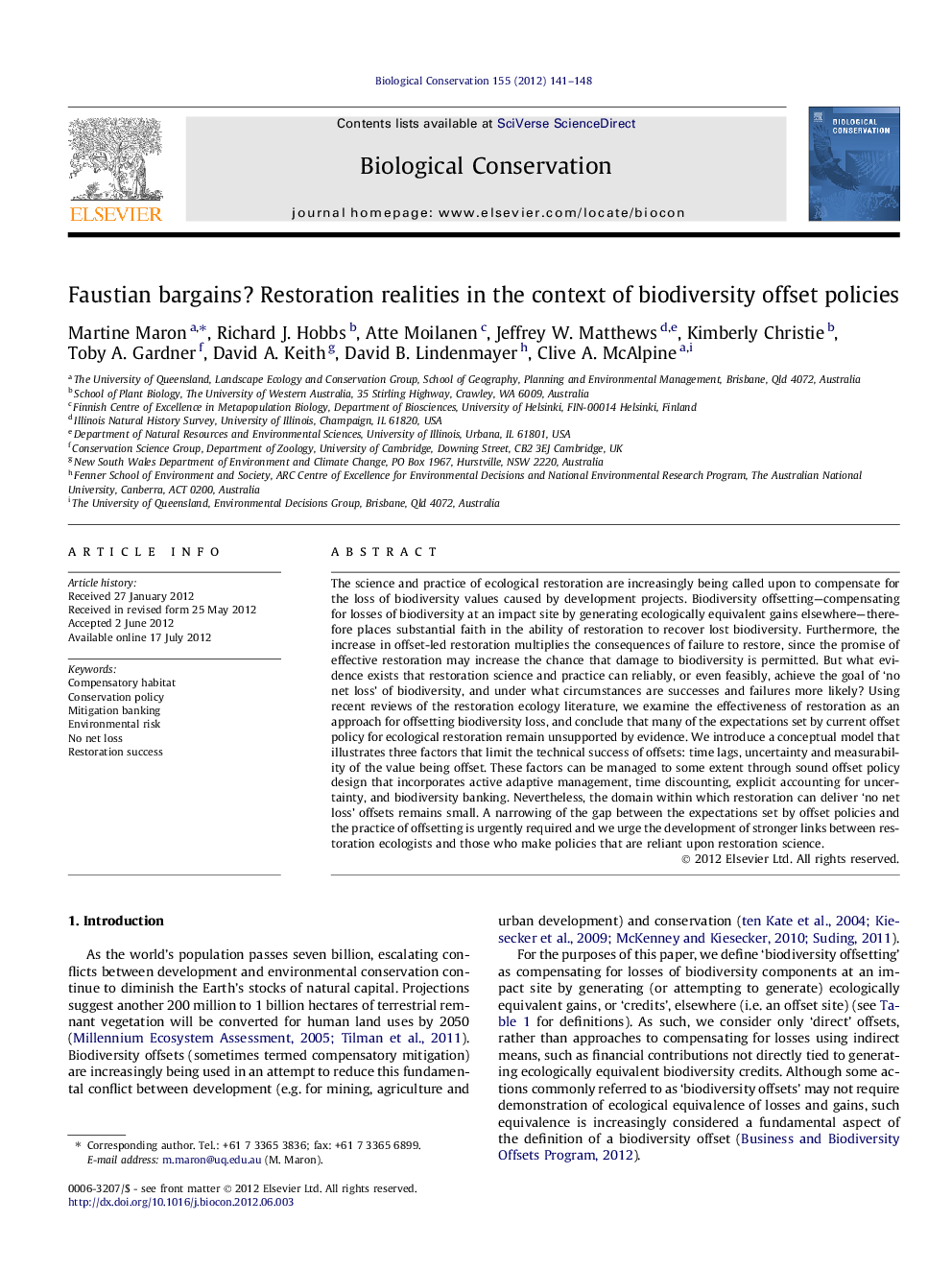| Article ID | Journal | Published Year | Pages | File Type |
|---|---|---|---|---|
| 4385116 | Biological Conservation | 2012 | 8 Pages |
The science and practice of ecological restoration are increasingly being called upon to compensate for the loss of biodiversity values caused by development projects. Biodiversity offsetting—compensating for losses of biodiversity at an impact site by generating ecologically equivalent gains elsewhere—therefore places substantial faith in the ability of restoration to recover lost biodiversity. Furthermore, the increase in offset-led restoration multiplies the consequences of failure to restore, since the promise of effective restoration may increase the chance that damage to biodiversity is permitted. But what evidence exists that restoration science and practice can reliably, or even feasibly, achieve the goal of ‘no net loss’ of biodiversity, and under what circumstances are successes and failures more likely? Using recent reviews of the restoration ecology literature, we examine the effectiveness of restoration as an approach for offsetting biodiversity loss, and conclude that many of the expectations set by current offset policy for ecological restoration remain unsupported by evidence. We introduce a conceptual model that illustrates three factors that limit the technical success of offsets: time lags, uncertainty and measurability of the value being offset. These factors can be managed to some extent through sound offset policy design that incorporates active adaptive management, time discounting, explicit accounting for uncertainty, and biodiversity banking. Nevertheless, the domain within which restoration can deliver ‘no net loss’ offsets remains small. A narrowing of the gap between the expectations set by offset policies and the practice of offsetting is urgently required and we urge the development of stronger links between restoration ecologists and those who make policies that are reliant upon restoration science.
► Restoration work is increasingly driven by offsets for biodiversity loss. ► We review the evidence that restoration offsets can avoid net loss of biodiversity. ► Biodiversity offsets demand more from ecological restoration than it can achieve. ► Poor measurability, long time lags and uncertainty are barriers to offset success. ► The domain within which restoration can deliver ‘no net loss’ offsets remains small.
